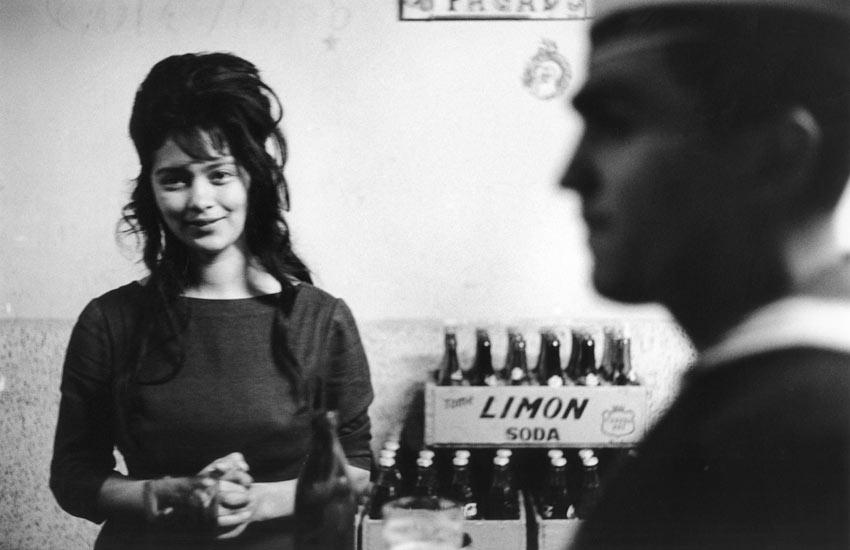
Bar, Valparaiso, Chile by Sergio Larrain, 1963. © Magnum Photos
Digital photographs possess a remorseless clarity. On standard settings, a good camera will faithfully transcribe the minutest details. The more we see color pictures of this kind, and take them for granted, the more they must inevitably be shaping our perception of reality and our place within it. These images make a norm of scrupulous realism. Everything is logged for inspection within the grid of super-bright megapixels, and nothing so recorded can escape our scrutiny.
1963. A bar in the port of Valparaiso in Chile. This monochrome picture by the great Chilean photographer Sergio Larrain (1931-2012) is already at a remove from reality. The scene didn’t really look like this, though when black and white was the usual medium of reportage, it always felt like it embodied documentary truth. Nothing in the picture is sharp or definite: not the sailor caught in startling profile in the foreground; not the lemon soda bottles in the crates—the bottle necks and caps vibrate as though the photographer has had a drink too many; and not even the young woman, who is the primary subject. The lines of her face and her hands dissolve in the subdued light. Where a contemporary digital photo would inexorably capture every hair on her head, in Larrain’s picture her dark locks, piled up high, merge to form a mysteriously structured silhouette that coils into the fabric of her dress.
It might seem a romantic picture. While there isn’t necessarily any connection between the man and woman, their proximity implies he could be interested in her. We can see from another photo Larrain took of the pair that he liked the idea of staging a visual relationship between them. In that version, the woman’s face and hair are more sharply focused, but the image, though still striking, has a less well resolved structure. What makes the more widely seen picture so compelling is the combination of frontal positioning and side view, our feeling of intimacy with her and distance from him, with the space between them bridged (or blocked) by the bottles that signal this is a bar.
It might not be easy to see at this image size, with her eyes melting into shadow, but the woman is not looking directly at the photographer. She is preoccupied. Her gaze is slightly off to the side and we might begin to wonder whether she is as happy (the clasped hands) as she at first appears. Perhaps the photograph is saying something about disconnection, even when a person is immersed in the lively atmosphere of a social space, but it allows this thought to emerge gradually from beneath the warmth of its surface. The picture’s ambiguous soft focus tactfully transmits the quiver of emotion.
See all Exposure columns
